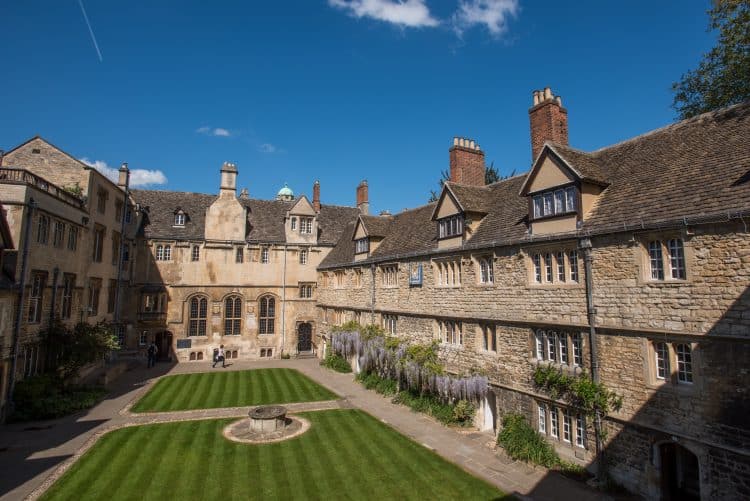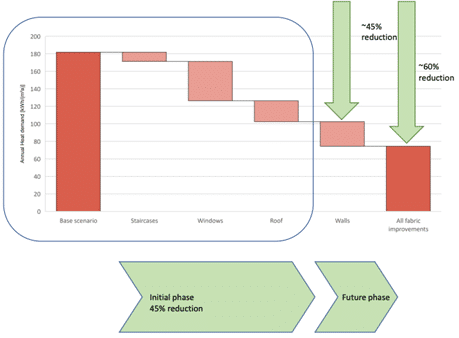Hall commissions decarbonisation plan to reach zero net energy by 2030
16 Jun 2022

In 2021, St Edmund Hall commissioned a decarbonisation plan, produced by Max Fordham and funded by the UK Government’s Salix Grant, to set out a road map of decarbonising its historic estate to become as close as possible to zero net energy by 2030. In collaboration with Max Fordham, Original Field Architect (OFA) carried out a detailed study of the Hall’s buildings and set out a proposed project for the medieval buildings in the Front Quad on Queen’s Lane. This is an important milestone in the Hall’s strategic aim to reduce its energy consumption and the plan will be used to inform future estate projects.
They key elements of the decarbonisation plan are to reduce energy demand though the Hall’s gas boiler heating system and fabric of the buildings. It is proposed that all gas boilers are replaced with air source heat pumps which use electricity supplied from renewable low carbon sources. Currently, the Hall’s electricity comes from renewable resources, and we pay for the Renewable Energy Guarantees of Origin (REGO). Therefore, the focus is on replacing our boilers as it will have the most substantial impact upon reducing our energy usage.
The plan also recommends improving the fabric of the Hall’s buildings with decarbonisation measures such as installing secondary glazing windows, closing staircases and insulating the walls and roofs. Max Fordham reviewed the fabric performance of different types of windows, walls and roofs; and looked at the technical constraints of heat pumps and the heat sources for the pumps (air, sewer, open and closed loop ground source). To minimise the amount of energy used and the size of the heat pump, it is proposed that the insulation standards of the worst performing buildings are first improved. Max Fordham also reviewed our gas meter data to produce a heat loss model of sample buildings to beter understand the benefits of the various proposed insulation measures. Generally, the newer and better insulated buildings will have less additional insulation as the marginal benefits compared to poorly insulated buildings is less.

Lastly, the plan has provided detailed decarbonisation proposals for each site and building. The chart below, for example, shows that the Hall could hypothetically achieve a 45% reduction in energy demand by improving the insulation and installing double glazing windows in the Front Quad.
We could also reduce the energy demand by 65% in the Kelly and Emden Buildings (student accommodation on Queen’s Lane) by implementing the same actions. Notably, each proposal demonstrates what could be achieved without the consideration of cost, planning constraints and practicalities our sites. Space, age of buildings and listing status will all be considered as the Hall implements any decarbonisation measures. Where is it not possible to accomplish the full recommendation, the Hall will investigate carbon offsetting measures to help us reach zero net energy by 2030.
Overall, St Edmund Hall is excited to start decarbonising this historic 800-year-old college and looks forward to a more sustainable future for future generations of Aularians and the local Oxford community.
Categories
Related News

